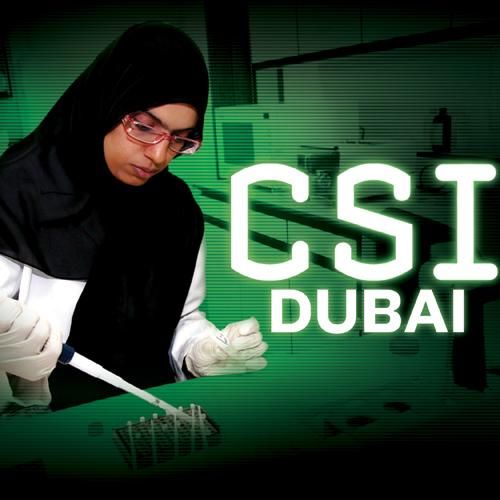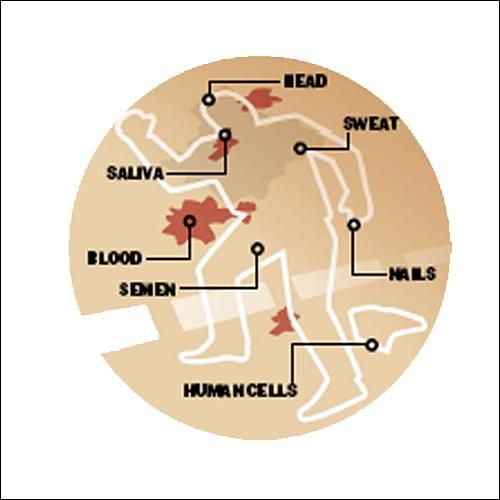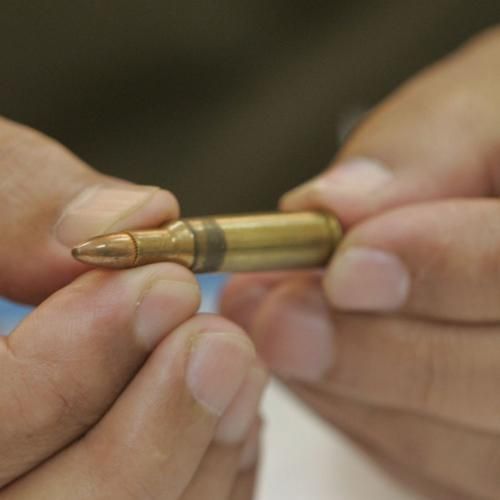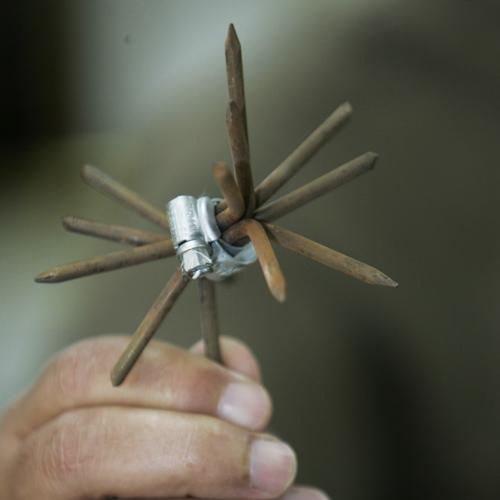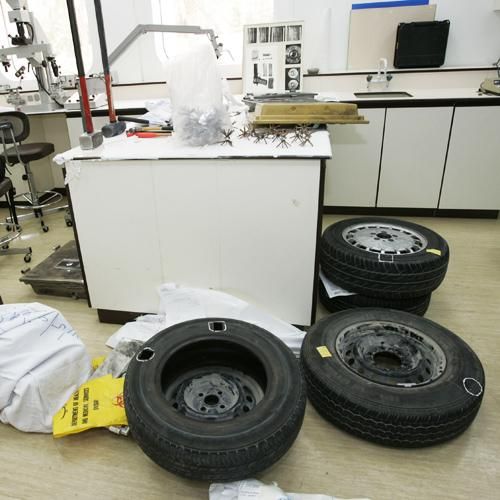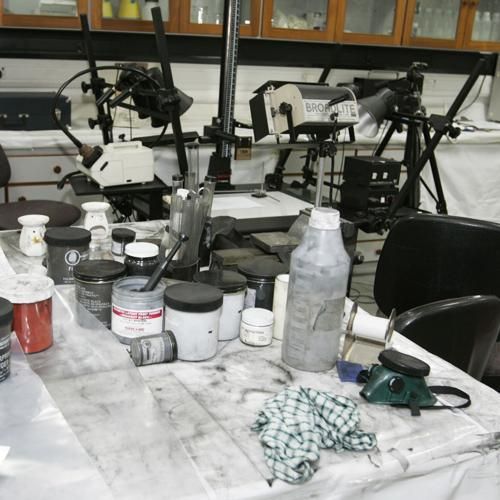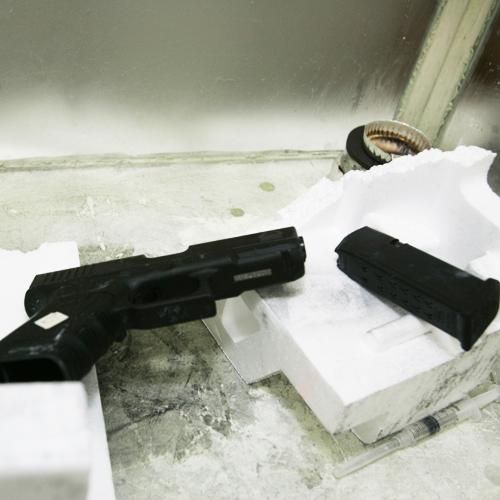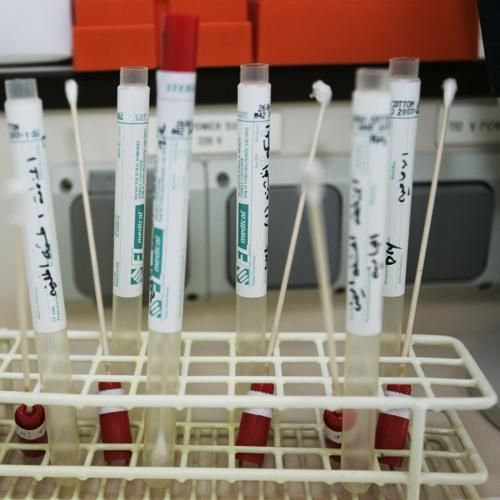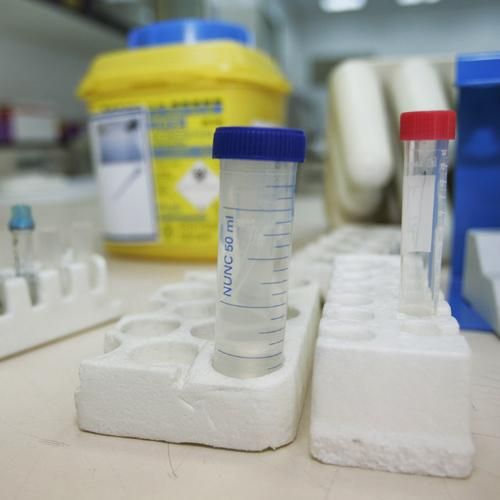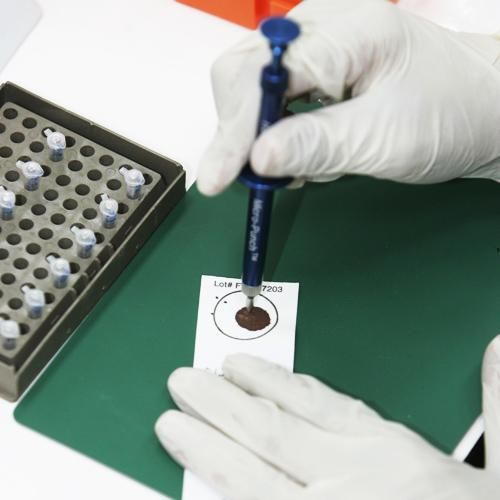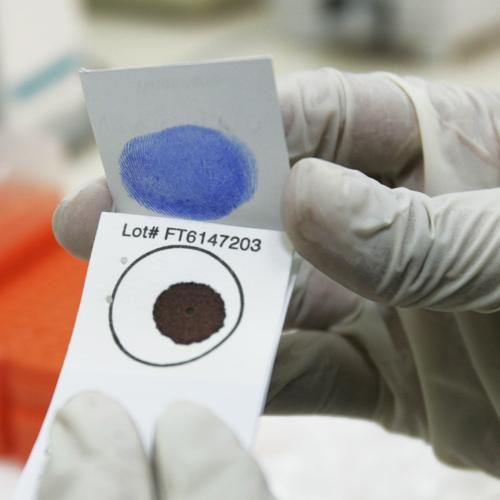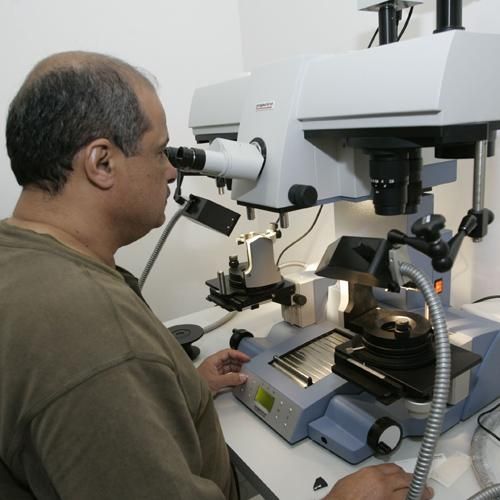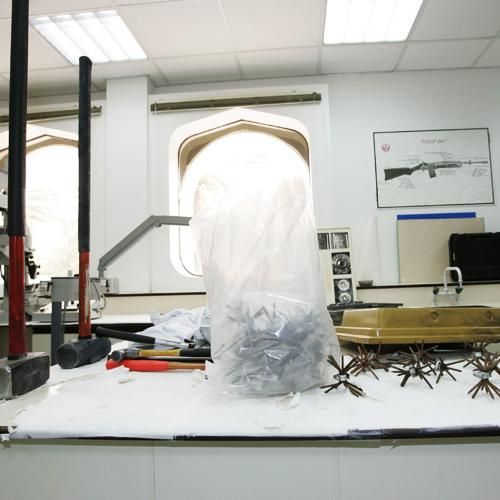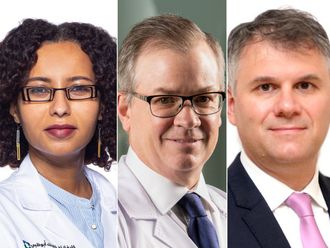A world of mysteries is waiting to be unravelled at the Dubai Police Forensics laboratory.
The smell of chemicals and a puzzling array of samples from crime scenes, wrapped and labelled, greet the uninitiated visitor.
Inside its unimposing offices, more than 400 modern-day Sherlock Holmeses do their work with a variety of high-tech crime-busting gear.
Forensic experts, clad in doctors' white scrubs, carry out different tests in eight laboratories. This is the nerve centre of forensic science in the emirate, where criminals are linked to evidence such as hair strands, shoe prints, chemicals, fingerprints and weapons used in crimes.
"Our reason for being is to serve the national community," said Colonel Ahmad Bin Hammad, Director of Forensics Science at Dubai police.
The crime laboratory examines, identifies and compares evidence using a wide range of scientific procedures and advanced instruments.
"All the experts we have in our department are highly trained forensic scientists and technical specialists who play a key role in linking the suspect, victim and crime scene with physical evidence," added Col Bin Hammad
The Dubai forensic lab contains unique facilities to meet the demanding work, following strict evidence-handling procedures and protocol.
Col Bin Hammad said the forensic scientists' work begins at the scene of a crime.
"The entire investigation hinges on that first person being able to properly identify, isolate, and secure the scene.
"It is important that the first officer on the crime scene properly protect the evidence."
He said scenes should be secured by establishing restricted perimeters to prevent the destruction of evidence.
He added: "The crime scene officers who are first to reach the location are provided with a kit equipped with every forensic tool such as gloves, measuring tape, alcohol pads, cotton swabs, envelopes, blood containers, scales, spoons, scissors, tweezers, markers, shoes, socks, toothpicks, filter paper, sacks and a checklist.
"They must also be supplied with brush and powder for finger prints and many other things," said Col Bin Hammad.
There are two types of evidence in most cases: Testimonial and physical.
"The testimonial evidence would be any witnessed accounts of an incident. The physical evidence would refer to any material items present at the crime scene.
"Crime scene documentation is important for the investigation process, so crime scene officers should report just the facts and nothing more," he explained.
"The crime scene investigator or evidence recovery technician should document what he or she sees, not what they think."
He added that the documentation can be done in three methods – written notes, photographs, or a diagram or sketch. Each method is important in the process of properly documenting the crime scene.
The final report should tell a descriptive story. A general description of the crime scene should be given just as the investigator sees it when he or she does the initial walk-through of the scene.
The crime scene unit's goal then is to collect, preserve, package, transport and document physical evidence left at the crime scene to avoid its destruction.
Proper procedures in handling, collecting and packaging of items of evidence must also be observed to ensure those recovered items will arrive at the lab safely for forensic tests.
Officers who are the first to reach the crime scene are provided with a kit of forensic tools that include:
- Gloves
- Measuring tape
- Alcohol pads
- Cotton swabs
- Envelopes
- Blood containers
- Scales
- Spoons
- Scissors
- Tweezers
- Markers
- Shoes and socks
- Toothpicks
- Filter paper
- Sacks
- Brushes
- Finger print powder
PAYING ATTENTION TO DETAIL
DNA analysis
The collection, preservation, and forensic analysis of biological material found at a crime scene can settle a crime investigation, explained Dr Farida Al Shamali, Deputy Director General of Forensic Sciences and Head of Biology & DNA section.
She is the first Emirati woman to handle this position.
"The result of a DNA test would be an inevitable proof of guilt or innocence. It enables authorities to solve a crime by identifying suspects, missing people and those involved in sexual assaults."
Moreover, Dr Farida said the compiled DNA index system in the lab allows forensic laboratories to identify suspects by matching DNA from crime scenes to convicted offenders.
In 2006, Dubai forensic science department helped solve 170 crimes through the DNA database available to them, she added.
Dr Farida, who has 16 years of forensics experience, said: "With complicated crimes, we can still get DNA samples. Even if we get a badly degraded sample, even if it is one nanogram, we can still reach a conclusion."
DNA samples can be extracted from hair, saliva, sweat, semen, blood, nails and human cells, she added. Testing these takes two days.
"Sometimes there are difficulties in dealing with decomposed samples or those that have been degraded by time. In these cases we develop different techniques to test these samples."
Fingerprints
Police officers in the fingerprints section look a bit like magicians. With a touch of a brush, the invisible is made visible.
Armed with a fibreglass brush, powder and a sheet of sticky plastic, they lift fingerprints from crime scenes.
Last year, a total of 3,704 fingerprints were submitted to the forensic crime section at the Dubai Police for examination. The unit identified 342 suspects by electronically comparing those prints with ones in its database.
Captain Ahmad Abdullah, the head of the fingerprint lifting section, said: "A variety of techniques, including use of chemicals, powders and other physical means, are employed in the detection and development of invisible prints.
"Fingerprints, formed before birth, cannot be changed. When anyone tries to deform his fingerprint, the distortion will eventually be erased and resume the shape of his/her original prints.
"Usually prints can be lifted only from smooth surfaces using the powder and brush. In case of invisible prints, the evidence will be treated with Cyanoa04crylate, an instant adhesive." It is then placed in a bowl of superglue. Within hours of being subjected to heat, the glue evaporates. A portion of it sticks on the prints in the evidence, making it more visible.
Unit examiners analyse and compare prints from the crime scene to known prints of suspects. Where a print has limited quality and detail, unit personnel perform microscopic examinations in order to make conclusive comparisons.
Firearms and toolmarks unit
A huge microscope attached to a monitor sits in a room full of samples of bullets, pistols, shotguns, screwdrivers, scissors, knives, hammers, wires, safes, locks, doorknobs and bullet holes in tyres.
In-house expert Taalat Abdul Munaim, Deputy Director of the Firearms and Toolmarks section, said: "Forensic firearms examinations are based on firearms identification, which involves the identification of a bullet, cartridge case, or other ammunition components as having been fired by or in a particular firearm.
"Our job is to lift traces from the substance by means of silicon, to treat it chemically, and find the real instrument used in the crime."
Firearms examiners microscopically compare bullets and ammunition components with each other as well as to other firearms. This is to determine whether an association exists between or among items submitted as evidence and items whose origins are known.
Similarly, forensic toolmark identification involves the identification of a toolmark as having been produced by a specific tool.
Examiners compare the micro- and macroscopic features of tool-marked items with tools that may have produced them.
Lead and other metal fragments, shot wads, shot cups, and bullets removed from bodies during an autopsy are also frequently received items in firearms-related cases.
The section identified 486 samples last year, most of them toolmarks connected to robberies.


